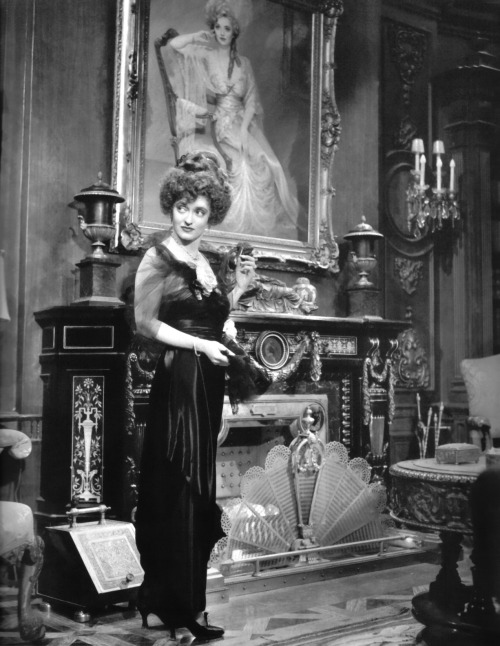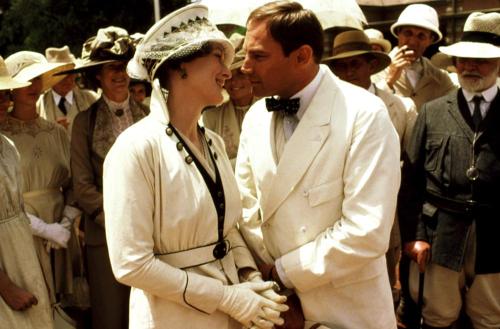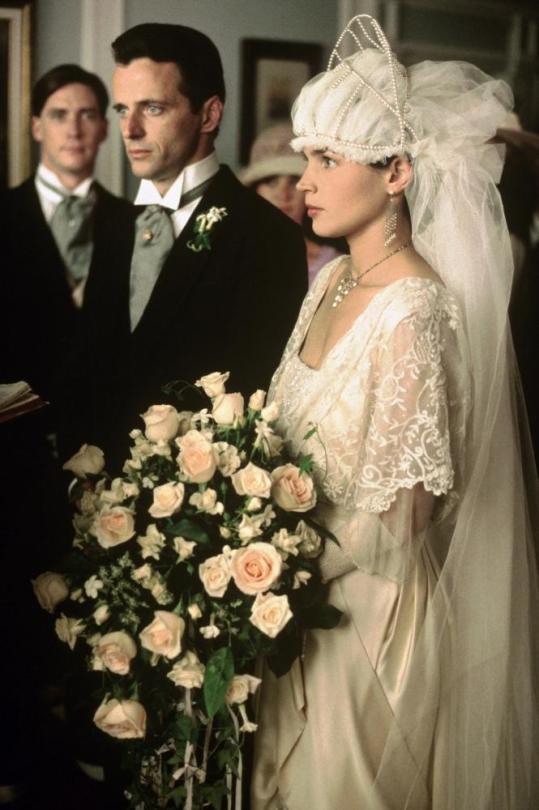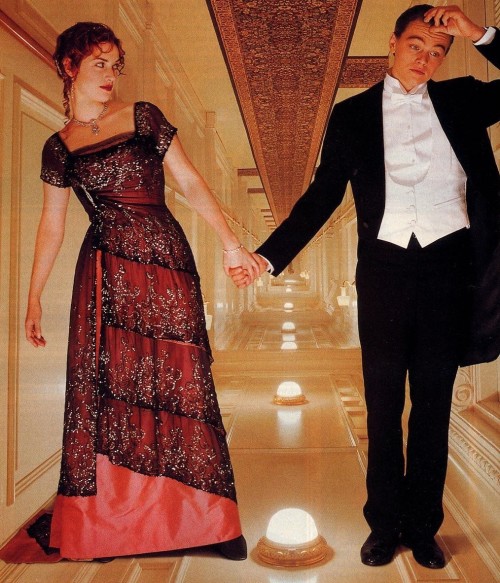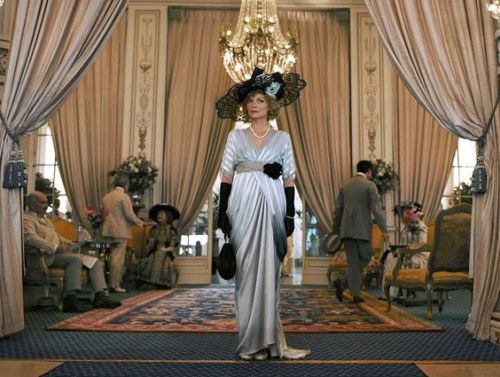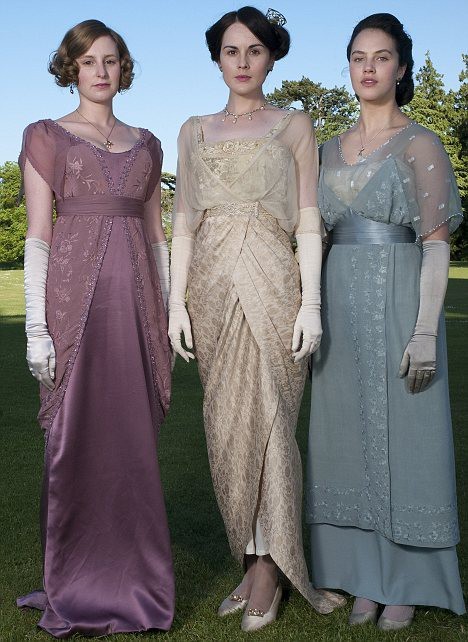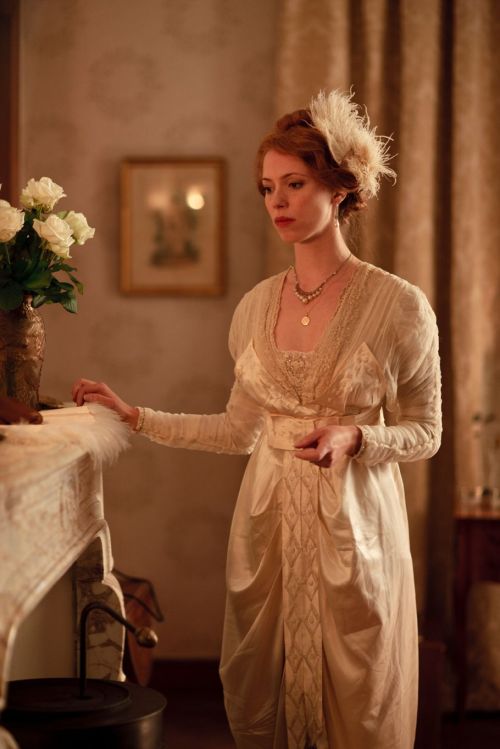
“PROMETHEUS” (2012) Review
When I had first seen the trailer for director Ridley Scott’s new science-fiction thriller, “PROMETHEUS”, I had no desire to see it. For me, it looked like another “alien in the spaceship” thriller that I have ignored for years. But after some persistent urging from a relative of mine, I finally saw it in the theaters nearly twelve years ago. Many years passed before I finally got around to a re-watch.
According to Greek mythology, Prometheus is a Titan and cultural hero who is believed to be responsible for the creation of man from clay. He also is also responsible for the theft of fire for human use, which enabled the latter to enjoy progress and civilization. Zeus punished Prometheus for the theft by sentencing the Tital to eternal torment. Zeus bounded Prometheus to rock, transformed to an eagle each day to feed on Prometheus’ liver. The latter would grow back and the eagle would feed on it again . . . day after day after day. What does this have to do with the movie, “PROMETHEUS”? Honestly, I do not know. I am not of the intellectual variety. Then again, I hear that Prometheus’ story is supposed to be a metaphor for human striving and quest for scientific knowledge, at the risk of unintended consequences. Hmmm. Now I understand why the filmmakers used this name.
Set in the late 21st century, “PROMETHEUS” is about the crew of the starship Prometheus that follows a star map discovered among the remnants of several ancient Earth cultures. Led to a distant world and an advanced civilization, the crew seeks the origins of humanity, but instead discovers a threat that could cause the extinction of the human race. Although some members of the cast claim otherwise, it has been confirmed that “PROMETHEUS” was developed as far back as the early 2000s as a fifth entry in the ALIEN franchise, with both Scott and director James Cameron developing ideas for a film that would serve as a prequel to Scott’s 1979 science fiction horror film, “ALIEN”. The project remained dormant until 2009, when Scott again became interested. A script by Jon Spaihts served as a prequel to the events of the ALIEN movies. However, Scott chose a different direction for the movie, in order to avoid repeating the storylines of the past films. He recruited “LOST” producer/writer Damon Lindelof to co-write a new script with Spaihts. They created a story in which Scott claimed is not directly connected to the ALIEN franchise.
The movie began with a humanoid alien drinks a dark bubbling liquid, and then starts to disintegrate. As its bodily remains cascade into a waterfall, the alien’s DNA triggers a biogenetic reaction. The story jumps to the year 2089, when archaeologists Elizabeth Shaw and Charlie Holloway discover a star map among several unconnected ancient cultures. The pair believes the maps are invitations from humanity’s creators or “Engineers”. Peter Weyland, the aging CEO of Weyland Corporation, funds the scientific vessel Prometheus to follow the map. The ship’s crew travels in stasis while the android David monitors their voyage, until they arrive at Moon LV-223. Mission director Meredith Vickers orders them to avoid making contact with any of the “Engineers” without her permission. The Prometheus lands near a large artificial structure, which a team explores. The expedition team manages to find an alien corpse and believe it to be an “Engineer”. Their expedition takes an ugly turn they discover that the “Engineers” and other life forms on the moon prove to be a lot more dangerous than they had imagined.
After my family and I watched the last reel of “PROMETHEUS”, the relative who had convinced me to see the movie leaned over and offered her apologies. She even offered to reimburse me for my movie ticket. Why? Because I discovered that my original reluctance to see the movie had been justified. I disliked “PROMETHEUS”. Wholeheartedly. It turned out to be the kind of the movie that I usually dislike. Not only did it turned out to be the typical science-fiction horror film that usually turned me off, I found the movie’s intellectual aspects of the plot pretentious and incomplete. Were there any aspects of “PROMETHEUS” that I liked? Well . . . the entire cast gave solid performances, aside from some questionable accents from at least two of the cast members. I cannot deny that Dariusz Wolski’s photography was breathtaking. Or that Pietro Scalia’s editing was first rate. And Ridley Scott did a great job in maintaining a steady pace for the movie, despite its 124 minutes running time. Other than that . . . there was nothing else about this film that impressed me.
I have few questions. Why did Elizabeth Shaw assume that the aliens who had created the star maps, were creators of mankind? How did she come to this conclusion? Because she had “faith”? Who was she supposed to be? A second-rate John Locke? Or a metaphor of the Titan Prometheus? And how did she come to the conclusion near the end of the movie that the “Engineers” were out to destroy mankind, after . . . uh, creating them? And what is it about this crew that they make such stupid mistakes that end up endangering them? A good example would be the geologist Fifield and the biologist Milburn, who lacked the good sense to run for their lives after spotting the snake-like alien. And could someone please explain how Shaw managed to walk and run around both Prometheus and the moon so soon after giving herself a brutal abortion to rid herself of her alien spawn? I have one last question. Why on earth would Elizabeth (the crew’s lone survivor) even bother traveling to the aliens’ homeworld at the end of the movie, now that she believes they are out to destroy humankind? Was it so important to her to learn about the aliens’ motives that she was willing to risk her life in such a stupid manner?
Moviegoers raved over Michael Fassbender’s performance as the android David. I was too busy feeling confused about the character to consider any accolades for the actor. Exactly how are we supposed to regard David? As another Data from “STAR TREK NEXT GENERATION”? Or as one of the replicants from another Scott film, 1982’s “BLADE RUNNER”? At first, David seemed to be in thrall over human culture, Elizabeth Shaw and the moon in general. Yet, a reason that is never fully explained, he decided to spike Charlie Holloway’s (Elizabeth’s love interest and fellow archeologist) drink with a dark liquid he had found from one of the moon’s stone cylinders. Why did he do that? Again, the movie failed to explain. Some critics were also in thrall over Idris Elba’s performance as Prometheus’ chief pilot, Janek. I was too busy wincing at his attempt to re-create some kind of African-American accent. He had managed to do this successfully in the 2010 movie, “THE LOSERS”. What in the hell happened? As for Rafe Spall’s Southern accent . . . frankly my dear, it sucked.
I wish I could say that I liked “PROMETHEUS”. But if I did, I would be lying. I did not like it one bit. The movie tried to be some kind of profound tale that would leave many moviegoers asking questions. And in a way it did. But my questions about the movie only reinforced my disenchantment with it. What is really sad about “PROMETHEUS” is that it proved to be one of those rare Ridley Scott films that ended up disappointing me. Pity.









